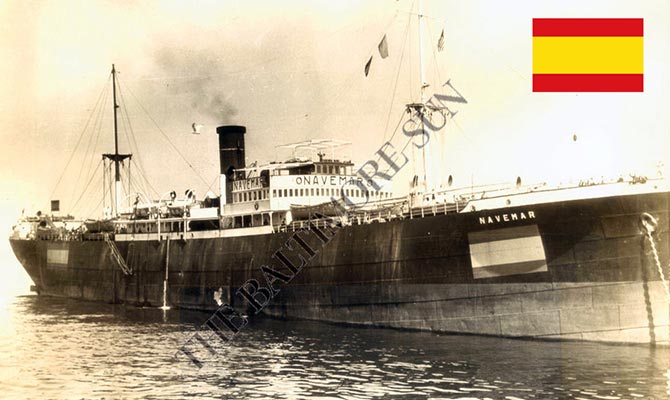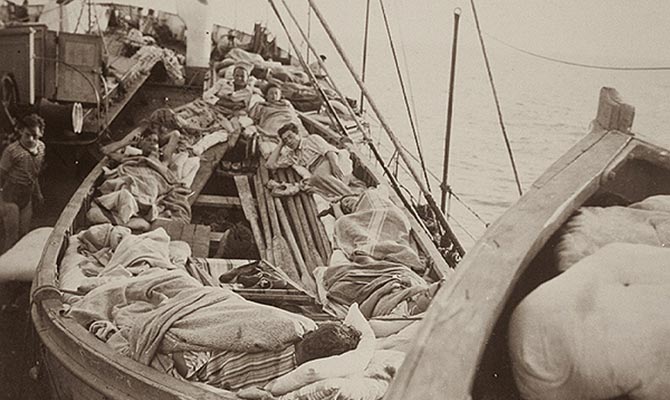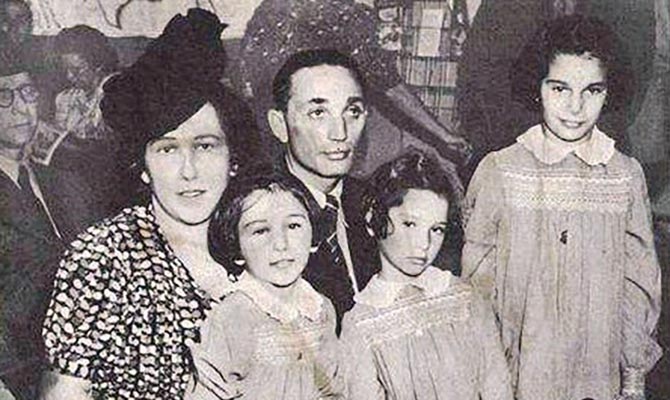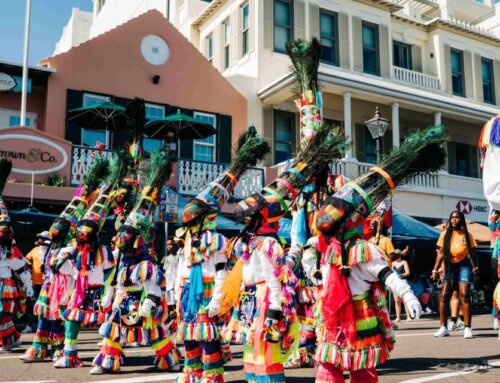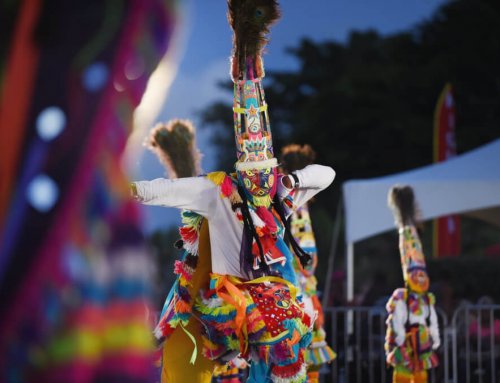‘Nevermore’ at Bermuda
Humans have a habit of destroying their own if left in the clutches of mad men, an enterprise now under the epithet of ‘genocide. Raphael Lemkin, a Polish lawyer of Jewish descent, coined the word in 1943 and his definition of the destruction of a people formed part of the legal foundation of the Nuremberg Trials.
In 1941, Bermuda would be directly touched by hand of genocide, as a cargo ship swayed at anchor in Five Fathom Hole with over a thousand Jewish refugees on board. Labeled ‘Nevermore’ by its benighted occupants, the presence at Bermuda of SS Navemar, out of Seville bound for New York, was brought to our attention by Marion Gumprecht Portman, a visitor to the National Museum.
Marion, sisters Karen and Renate and their parents Werner and Edith Gumprecht left Hamburg in July 1941, ‘after fond goodbyes to their parents and relatives whom they would never see again, for Seville to embark for the United States on the Navemar, one of a number of notorious refugee ships.
At Bermuda in late August 1941, the women and children were allowed off the ship and were given a picnic by the ladies of the Imperial Order of the Daughters of the Empire and the Bermuda Women’s Auxiliary Force, for which a notice of thanks was published in The Royal Gazette and Colonist. Among the Navemar complement at the tea party was Hannah Arendt, perhaps the most important female philosopher of the last century (who coined the phrase ‘banality of evil’), Marc Chagall’s daughter Ida, and Lucille de Saint-Andre, who wrote a fictional account about the Navemar and the infamous Vichy French concentration camp, Gurs, entitled, Bye Bye, Baden-Baden. For many on the Navemar, it was “bye bye” to everything they knew, loved and owned in Europe.
Perhaps the sentiments of most on the potential death-ship were echoed in the words of Rosi Moses-Scheuer: “After we had given up all hope of arriving in America, we docked in New York harbor. The day of my arrival in the New York harbor was one of the happiest of my life. Only one thing dimmed my joy: the thought of those who could not come here, of the friends and fellow sufferers we had to leave behind. That thought still haunts me. I know only too well with what fear, need, and doubt those people live.”
Before we laud ourselves for “their first experience of such humanity on their voyage”, we are reminded by the doyen of the history of Bermuda tourism, Professor Duncan McDowall, that starting in the 1930s, we basically banned Jews from visiting the Island, or segregated them, as we did with black people, from the “better” hotels hereabouts, until the repeal of an odious Hotel Act in 1959. However, it is only by continued attention to human rights that we may say “nevermore” at Bermuda.
The Navemar, by the by, perhaps still filthy from its ‘Voyage of the Damned’, was later sent to the bottom in 1942 by the Italian submarine Barbarigo, not too distant from the port of Seville.

